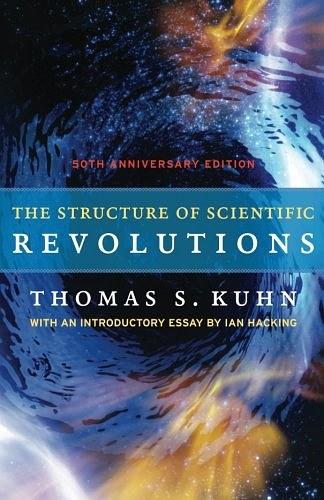The Structure of Scientific Revolutions
内容简介
A good book may have the power to change the way we see the world, but a great book actually becomes part of our daily consciousness, pervading our thinking to the point that we take it for granted, and we forget how provocative and challenging its ideas once were—and still are. The Structure of Scientific Revolutions is that kind of book. When it was first published in 1962, it was a landmark event in the history and philosophy of science. Fifty years later, it still has many lessons to teach.
With The Structure of Scientific Revolutions, Kuhn challenged long-standing linear notions of scientific progress, arguing that transformative ideas don’t arise from the day-to-day, gradual process of experimentation and data accumulation but that the revolutions in science, those breakthrough moments that disrupt accepted thinking and offer unanticipated ideas, occur outside of “normal science,” as he called it. Though Kuhn was writing when physics ruled the sciences, his ideas on how scientific revolutions bring order to the anomalies that amass over time in research experiments are still instructive in our biotech age.
This new edition of Kuhn’s essential work in the history of science includes an insightful introduction by Ian Hacking, which clarifies terms popularized by Kuhn, including paradigm and incommensurability, and applies Kuhn’s ideas to the science of today. Usefully keyed to the separate sections of the book, Hacking’s introduction provides important background information as well as a contemporary context. Newly designed, with an expanded index, this edition will be eagerly welcomed by the next generation of readers seeking to understand the history of our perspectives on science.
......(更多)
作者简介
American historian and philosopher of science, a leading contributor to the change of focus in the philosophy and sociology of science in the 1960s. Thomas Samuel Kuhn was born in Cincinnati, Ohio. He received a doctorate in theoretical physics from Harvard University in 1949. But he later shifted his interest to the history and philosophy of science, which he taught at Harvard, the University of California at Berkeley, Princeton University, and Massachusetts Institute of Technology (MIT).
In 1962, Kuhn published The Structure of Scientific Revolutions, which depicted the development of the basic natural sciences in an innovative way. According to Kuhn, the sciences do not uniformly progress strictly by scientific method. Rather, there are two fundamentally different phases of scientific development in the sciences. In the first phase, scientists work within a paradigm (set of accepted beliefs). When the foundation of the paradigm weakens and new theories and scientific methods begin to replace it, the next phase of scientific discovery takes place. Kuhn believes that scientific progress—that is, progress from one paradigm to another—has no logical reasoning. Kuhn's theory has triggered widespread, controversial discussion across many scientific disciplines.
......(更多)
目录
Introductory Essay by Ian Hacking
Preface
I. Introduction: A Role for History
II. The Route to Normal Science
III. The Nature of Normal Science
IV. Normal Science as Puzzle-solving
V. The Priority of Paradigms
VI. Anomaly and the Emergence of Scientific Revolutions
VII. Crisis and the Emergence of Scientific Theories
VIII. The Response to Crisis
IX. The Nature and Necessity of Scientific Revolutions
X. Revolutions as Changes of World View
XI. The Invisibility of Revolutions
XII. The Resolution of Revolutions
XIII. Progress through Revolutions
Postscript-1969
Index
......(更多)
读书文摘
对某一时期某一专业做仔细的历史研究,就能发现一组反复出现而类标准似的实例,体现各种理论在其概念的、观察的和仪器的应用中。这些实例就是共同体的范式,它们存在于教科书、课堂讲演和实验室的实验中。
当历史学家采取这一步时,必须将共同体的范式相互比较,并且与共同体中流行的研究报告进行比较。在这样做时,其目的是发现明显的或暗含的可分离的因素,这些因素是这个共同体的成员从他们更具全局性的诸范式中抽象出来的,并展开成为他们研究的规则。
......(更多)






